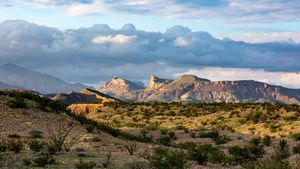Unraveling the Dinosaurs' Secrets Through Fossilized Feces
When we think of dinosaurs, we often picture massive creatures roaming lush landscapes, but what if we told you their ancient bathroom habits hold the key to unraveling the mysteries of their diets and ecosystems? A recent international collaboration led by researchers at Uppsala University has provided fascinating insights by examining coprolites - fossilized dinosaur dung - dating back approximately 200 million years.
This innovative study has shed light on how dinosaurs thrived during the Triassic and Jurassic periods. Using advanced synchrotron imaging technology, the team could visualize the internal contents of these coprolites with remarkable detail. They discovered undigested remains of plants, prey, and even tiny insects, providing clues about the environmental dynamics and dietary preferences of early dinosaurs.
Paleontologist Martin Qvarnström, lead author of the study, noted the significant achievement, stating, "Piecing together 'who ate whom' in the past is true detective work." With this research, he emphasizes how analyzing what animals consumed and their interactions with the ecosystem contributes to our comprehension of their remarkable success.
For the study, the researchers examined hundreds of samples collected over 25 years from previously underexplored areas of Pangea, the supercontinent housing these ancient creatures. They combined findings from the coprolites with data on climate and other fossils, building a comprehensive view of dinosaur life during the period when they came to dominate the Earth.
Grzegorz Niedźwiedzki, the study's senior author, remarked on the innovative approach, saying, "Our research is groundbreaking because we have chosen to understand the biology of early dinosaurs based on their dietary preferences. There were many surprising discoveries along the way." Among these surprises were coprolites containing remains of fish, insects, and even larger mammals, such as bone-crushing crocodile ancestors. One sample revealed almost perfectly preserved small beetles and semi-complete fish, providing rare glimpses of prehistoric life.
Interestingly, the fossilized feces from long-necked herbivorous dinosaurs such as sauropods also yielded unexpected results. Researchers found large amounts of tree fern remnants along with other plant types and charcoal. A notable hypothesis suggests the ingestion of charcoal may have served to detoxify the gastrointestinal tracts, considering some ferns can be poisonous to herbivores. This detail points to dietary adaptiveness, which seems to have edged these colossal creatures toward evolutionary success.
While much research has been focused on the lives and extinction of dinosaurs, this study aims to fill the notable knowledge gap surrounding their early evolution during the Late Triassic period. The researchers propose a five-step evolutionary model based on their findings, which may help explain global patterns of dinosaur adaptation through climatic changes and environmental shifts.
Qvarnström expressed the importance of the findings, stating, "Understanding how the first dinosaurs achieved their success can offer valuable insights about prehistoric ecosystems and evolutionary processes." He also stressed the relevance of this study to contemporary times, remarking, "Unfortunately, climate change and mass extinctions are not just phenomena of the past. By examining earlier ecosystems, we gain awareness of how life responds and adapts amid changing conditions."
Summing up the broader lessons from their research, Niedźwiedzki added, "The way to avoid extinction is to eat a lot of plants, which is precisely what the early herbivorous dinosaurs did. The reason for their evolutionary success is rooted in their love for green and fresh plant shoots."
This riveting exploration of the ancient diet of dinosaurs through fossilized feces is more than just academic curiosity—it’s about piecing together Earth’s past to inform our future as we navigate our own environmental challenges today.



